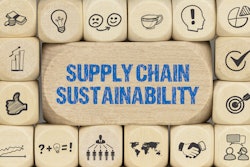
The Supply & Demand Chain Executive team thanks you for your continued readership and support through 2024 and beyond.
Here are the Top 5 most viewed articles on our site for 2024:
What to Expect in the 2025 Semiconductor Supply Chain
Though many anticipate chip inventory rebalancing and normalization come early 2025, the chip supply chain will continue to face challenges and constraints. Infrastructure costs, geopolitical events, increased vulnerability to natural disasters, and both natural resource and talent shortages will all contribute to ongoing challenges, even as semiconductor supply normalizes.
The widespread adoption of artificial intelligence (AI) and hyper-scale cloud computing is driving much of the surge in chip demand and has also led to shifting fabrication plant (fab) priorities, which will impact sourcing for certain components in 2025 and beyond.
Frank Cavallaro, CEO of A2 Global Electronics, explains that though some elements of market recovery are worth celebrating, buyers should remain cautious and proactively prepare for recovery while developing strategies that help minimize risk.
The True Impact of Blockchain for Global Supply Chains is Yet to be Realized
A Clare Adelgren, global head of blockchain sales and operations at EY, describes, the value proposition of harnessing blockchain technology to transform supply chains is not new. The idea of a distributed ledger, that is transparent and immutable, lends itself to imagining a world where all participants involved in the process of producing, distributing, storing, selling, and consuming a product can view its origin and status in real time. The benefits of such traceability include improved food safety, reduced fraud and optimization in the distribution of scarce resources.
However, like any emerging technology, the early years of blockchain witnessed the launch of numerous projects and a wide variety of use cases with a mixed level of success. Some reports conclude that as many as 92% of those early projects in blockchain have failed. While it is debatable if all early technical experiments that don’t turn out as planned should be categorized as failures; it is critical to look at them closely, understand what happened and then build on the learning.
Functional Transformations: The State of Procurement
We've reached a crossroads. Today, we stand at the intersection of technological innovation, global economic shifts and evolving regulations transitioning the state of procurement in 2024 into a dynamic tapestry of challenges and opportunities. Procurement, once seen as a traditional back-office function, has transformed into a strategic powerhouse that can drive organizational success. Aman Mann, co-founder and CEO at Procurify, says in 2024, the role of procurement is more important than ever, as businesses face complex and dynamic macroeconomic conditions that impact the way they grow and manage their operations. In this article, Alexis Mizell-Pleasant, managing editor at Food Logistics and Supply & Demand Chain Executive, breaks down the state of procurement in 2024.
Biden-Harris Administration Announce Investment for Rail Tunnel Between New York, New Jersey
In July, Marina Mayer, editor-in-chief at Food Logistics and Supply & Demand Chain Executive, reported on the Biden-Harris Administration's announcement of a $66 billion investment in the Hudson River Tunnel project, which will construct a critical new rail tunnel between New York and New Jersey along a vital economic corridor. Said to be one of the largest infrastructure projects in U.S. history, the project will provide four modern rail tunnels for Amtrak and NJ Transit trains and provide the capability to significantly expand capacity in the future. The new tunnel and the rehabilitated tunnel are estimated to open by 2038.
Implementing Gender Balance in Supply Chain Management
As the workforce continues to recognize the value of different perspectives and experiences more and more, the growth of women in the supply chain sector has skyrocketed. This positive trend is not only reshaping the composition of the general workforce but also contributing to enhanced innovation, collaboration and industry performance. DEI, education and opportunities highlighting these enhancements remain pivotal in the era of women joining and growing in the industry.
The journey towards gender balance in supply chain management is not just about reaching quotas, this article by Supply & Demand Chain Executive details the importance of embracing diversity as a strategic advantage for all.




















